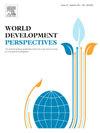劳动需求与教育中的性别不平等:了解赞比亚的入学模式
IF 2.3
Q2 DEVELOPMENT STUDIES
引用次数: 0
摘要
性别是造成学校教育差距的一个主要因素,在大多数低收入和中等收入国家,女性的入学率和学业成绩低于男性。在本文中,我们汇集了来自两个来源的数据来描述赞比亚入学率的性别差距,并探讨了可能导致观察到的差距的因素。对全国代表性数据的分析显示,小学适龄男孩的入学率比女孩低3到6个百分点,但这种性别差距在14岁以后就会逆转。到18岁时,女孩入学的可能性要低近20%。在赞比亚东部省,男孩的小学入学率比女孩低近15个百分点。在时间和资源更有限的家庭中,男性在小学教育方面的劣势更大,例如由失业人员担任户主的家庭和依靠柴火(一种通常由家庭手工收集的资源)的家庭。来自东部省的初步调查数据显示,农村家庭的男孩失学的可能性更大,失学男孩的父母认为经济困难、农活和放牛是失学的主要原因。总的来说,我们的研究结果表明,工作或木材收集的家庭劳动力需求迫使照顾者不让小男孩上学,而不是系统性的性别偏好。重要的是要考虑这些导致低入学率的经济因素,以有效地解决学校教育中的性别差距。本文章由计算机程序翻译,如有差异,请以英文原文为准。
Labor demands and gender inequality in education: understanding school enrollment patterns in Zambia
Gender is a major factor driving schooling gaps, with female school attendance and attainment lower than male outcomes in most low- and middle-income countries. In this paper, we bring together data from two sources to describe gender gaps in school enrollment in Zambia and explore factors that may be driving the observed gaps. Analysis of nationally representative data shows that boys of primary school-going ages are three to six percentage points less likely to be in school than girls, but this gender gap flips after age 14. By age 18, girls are almost 20 percentage points less likely to be enrolled in school. In the Eastern Province of Zambia, boys are almost 15 percentage points less likely than girls to be enrolled in primary schools. The male disadvantage in primary schooling is larger in households that are more time and resource-constrained, such as households headed by unemployed individuals and households that rely on firewood, a resource that households typically collect manually. Primary survey data from the Eastern Province show that young boys from farming households are more likely to be out of school, with parents of out-of-school boys citing financial challenges, farm work, and cattle herding as key reasons for school non-enrollment. Overall, our findings suggest that household labor demands for work or wood collection are compelling caregivers to keep young boys out of school, not systematic gender preferences. It is important to consider these types of economic factors that drive% low school enrollment to effectively address gender gaps in schooling.
求助全文
通过发布文献求助,成功后即可免费获取论文全文。
去求助
来源期刊

World Development Perspectives
Social Sciences-Sociology and Political Science
CiteScore
4.50
自引率
0.00%
发文量
65
审稿时长
84 days
期刊介绍:
World Development Perspectives is a multi-disciplinary journal of international development. It seeks to explore ways of improving human well-being by examining the performance and impact of interventions designed to address issues related to: poverty alleviation, public health and malnutrition, agricultural production, natural resource governance, globalization and transnational processes, technological progress, gender and social discrimination, and participation in economic and political life. Above all, we are particularly interested in the role of historical, legal, social, economic, political, biophysical, and/or ecological contexts in shaping development processes and outcomes.
 求助内容:
求助内容: 应助结果提醒方式:
应助结果提醒方式:


